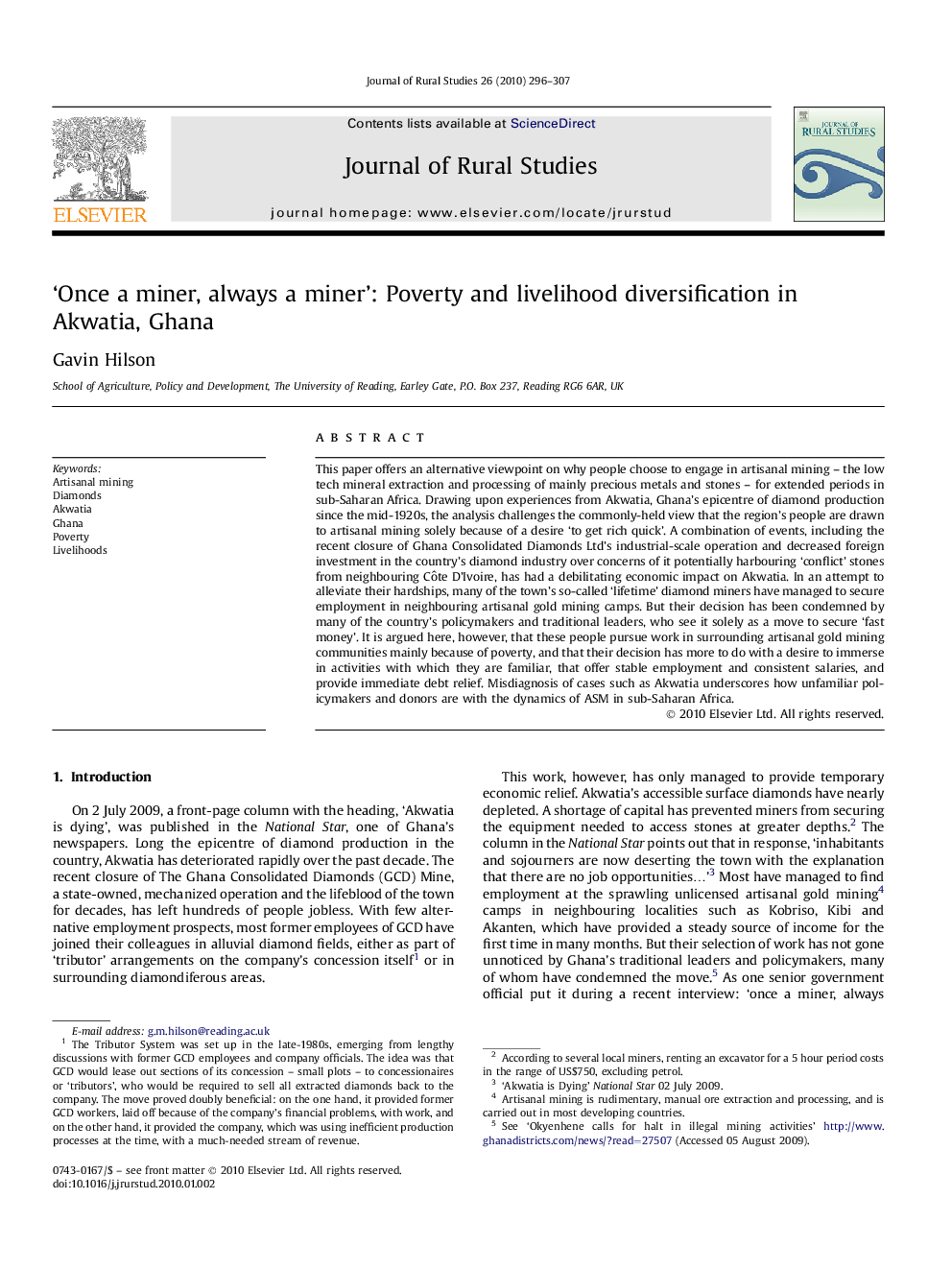| کد مقاله | کد نشریه | سال انتشار | مقاله انگلیسی | نسخه تمام متن |
|---|---|---|---|---|
| 92559 | 159981 | 2010 | 12 صفحه PDF | دانلود رایگان |

This paper offers an alternative viewpoint on why people choose to engage in artisanal mining – the low tech mineral extraction and processing of mainly precious metals and stones – for extended periods in sub-Saharan Africa. Drawing upon experiences from Akwatia, Ghana's epicentre of diamond production since the mid-1920s, the analysis challenges the commonly-held view that the region's people are drawn to artisanal mining solely because of a desire ‘to get rich quick’. A combination of events, including the recent closure of Ghana Consolidated Diamonds Ltd's industrial-scale operation and decreased foreign investment in the country's diamond industry over concerns of it potentially harbouring ‘conflict’ stones from neighbouring Côte D'Ivoire, has had a debilitating economic impact on Akwatia. In an attempt to alleviate their hardships, many of the town's so-called ‘lifetime’ diamond miners have managed to secure employment in neighbouring artisanal gold mining camps. But their decision has been condemned by many of the country's policymakers and traditional leaders, who see it solely as a move to secure ‘fast money’. It is argued here, however, that these people pursue work in surrounding artisanal gold mining communities mainly because of poverty, and that their decision has more to do with a desire to immerse in activities with which they are familiar, that offer stable employment and consistent salaries, and provide immediate debt relief. Misdiagnosis of cases such as Akwatia underscores how unfamiliar policymakers and donors are with the dynamics of ASM in sub-Saharan Africa.
Journal: Journal of Rural Studies - Volume 26, Issue 3, July 2010, Pages 296–307